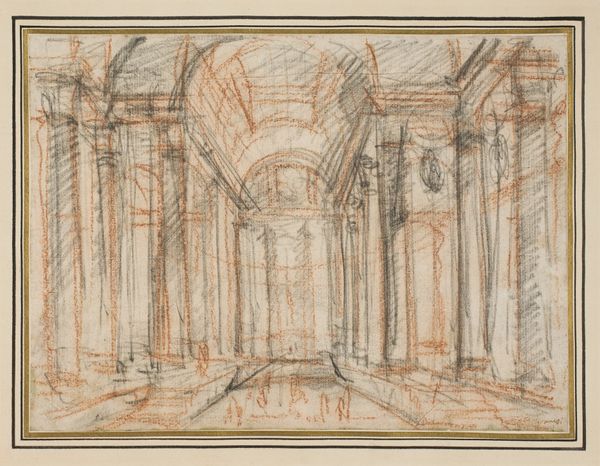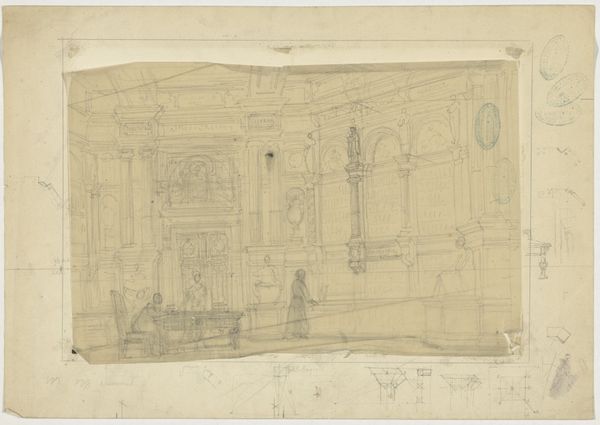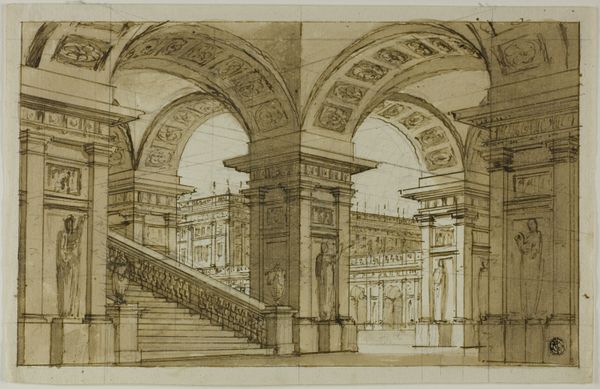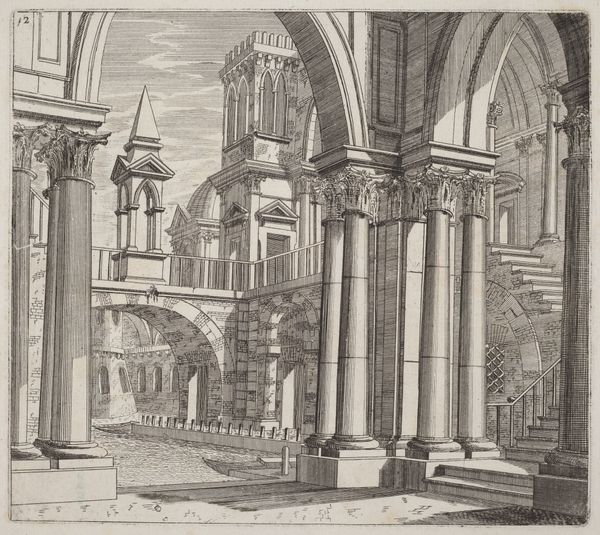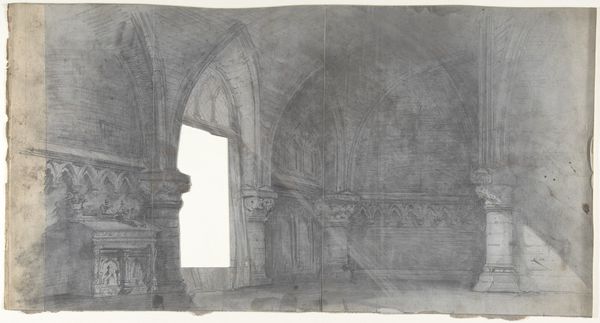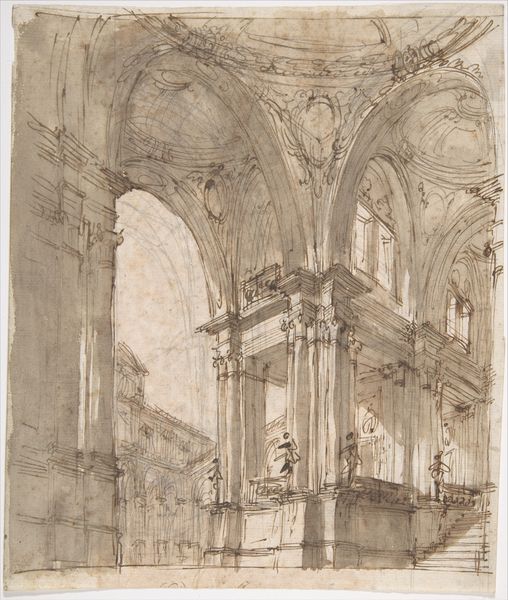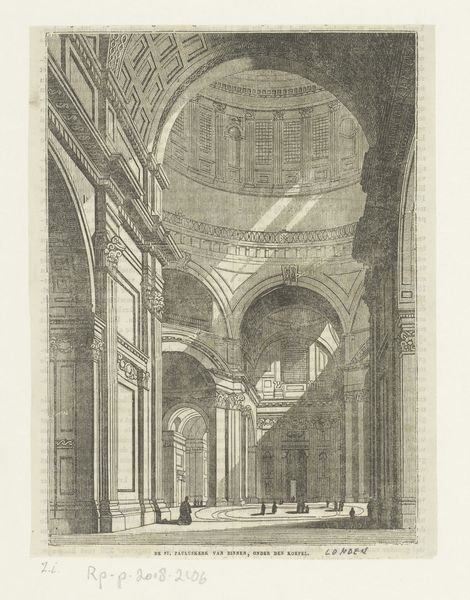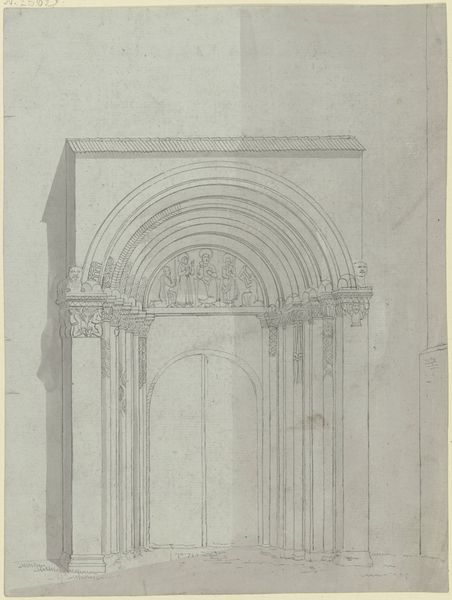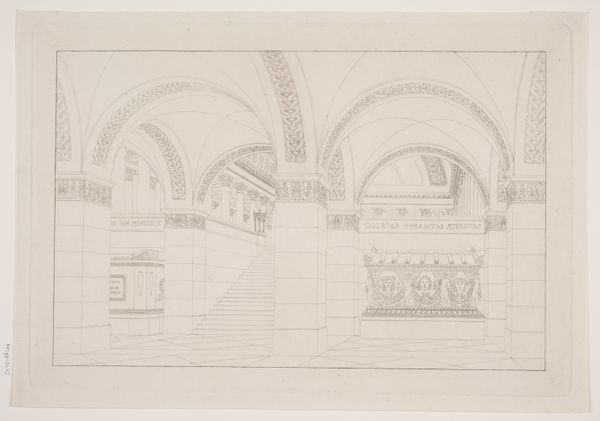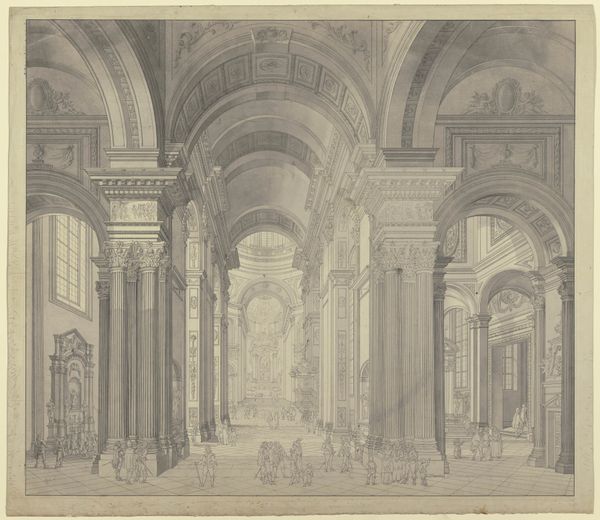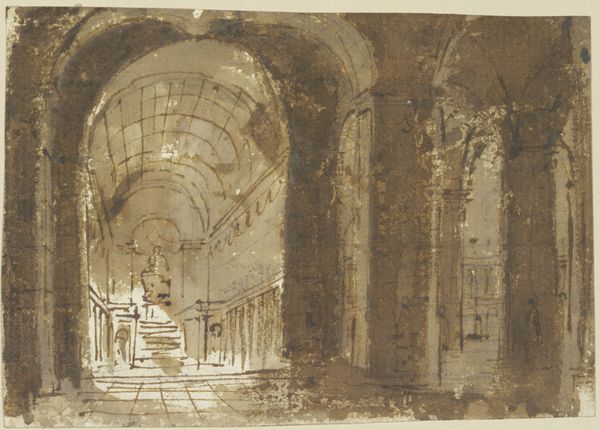
drawing, ink, chalk, graphite, architecture
#
drawing
#
baroque
#
form
#
ink
#
chalk
#
line
#
graphite
#
cityscape
#
architecture
Copyright: Public Domain
Curator: Allow me to introduce a drawing, an intriguing piece titled "Portico" by Francesco Guardi, housed right here at the Städel Museum. Guardi worked primarily with chalk, graphite, and ink to achieve this sketch-like design. Editor: My immediate reaction is one of slight unease. The stark linearity coupled with those immense columns gives off an almost Piranesian sense of oppressive grandeur, but also a strong, balanced sense of the geometry that dictates Baroque architecture. Curator: That's an interesting interpretation! You know, Guardi was working in Venice, a city known for its theatricality and public spectacle. "Portico," like many of his architectural renderings, speaks to Venice’s ambition to demonstrate power through construction during the Baroque period. I think his perspective gives us some clue of how public figures experienced daily life in Venice. Editor: Power, yes, it screams of it! And note the sharp contrast created by the light and shadow. These elements really underscore the rigid geometry but also make the drawing visually arresting. There’s an almost dizzying repetition with the use of columns. This could easily be about the form, the interplay of solids and voids, of light and line. Curator: Absolutely, and the question becomes: what informed these aesthetic decisions? This drawing presents what I see as one perspective on the theatricality of Venetian public life and government during this period. In contrast to paintings, this simple drawing offers clues about public life during this time period and Guardi's attempt to render it into line, shape, shadow, and light. Editor: So, by framing it as spectacle and focusing on how this kind of power and wealth trickled down to the common folk, you almost imply some critique by Guardi against Baroque society? Curator: Perhaps not critique. More so, I think he tries to give a depiction of what these architectural spaces could come to represent. Editor: A compelling idea, framed by impeccable execution. From my perspective, it is clear the power the picture holds comes precisely from Guardi's control over line, light, shadow, and form that, although seemingly simple, communicate with remarkable impact.
Comments
No comments
Be the first to comment and join the conversation on the ultimate creative platform.
